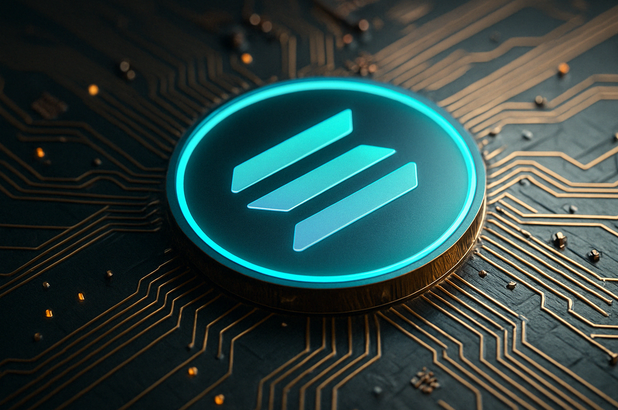TLDR
- BTQ debuts NIST-approved quantum security on Solana’s blazing-fast network.
- Quantum-safe cryptography lands on Solana, protecting $1T+ DEX volume.
- BTQ & Bonsol team up to deliver off-chain quantum-secure compute on Solana.
- Solana gets a quantum shield—BTQ brings futureproof security today.
- BTQ’s NIST-grade crypto paves the way for regulated blockchain adoption.
BTQ Technologies Corp. (BTQ) surged 15.29% to $9.49 after launching the first NIST-standardized post-quantum cryptographic signature on Solana.
BTQ Technologies Corp. Common Stock, BTQ
The milestone follows a strategic partnership with Bonsol Labs, enabling secure blockchain operations on one of the fastest trading networks. This development positions BTQ as a core infrastructure provider for emerging quantum-resistant financial platforms.
Quantum Breakthrough Enhances Solana’s Security Capabilities
BTQ integrated the NIST FIPS 204-standard ML-DSA signature verification directly into the Solana blockchain using Bonsol’s proving network. This implementation allows the quantum-safe computation to run off-chain while maintaining verifiable trust on-chain. As a result, Solana keeps its high transaction speed while gaining quantum resistance.
Solana currently processes over $1 trillion in annual decentralized exchange (DEX) volume, demanding robust and scalable security measures. Traditional cryptographic methods like ECDSA are no longer sufficient against future quantum computing threats. With this demonstration, BTQ addresses these concerns while maintaining Solana’s sub-second transaction speeds.
The integration reduces the resource load on Solana by handling heavy computations externally through Bonsol’s verifiable compute architecture. This system ensures data integrity and authentication without slowing down the network. Thus, the network remains high-speed and scalable under quantum-resistant conditions.
Bonsol Partnership Unlocks Monetization Through Hardware Acceleration
BTQ’s Quantum Compute-in-Memory (QCIM) hardware accelerates both post-quantum cryptographic processes and Bonsol’s off-chain verifiable computations. This dual capability enables faster operations and positions the system to handle large-scale network activity. The collaboration offers a commercially viable model for capturing transaction fees from Solana’s expanding trading volume.
As regulatory authorities push for mandatory post-quantum security, BTQ’s timing places it at the center of growing compliance demands. The integration supports NIST-standardized algorithms, aligning with federal requirements and enhancing BTQ’s appeal across regulated blockchain markets. This strategy opens access to financial institutions already building on Solana.
The partnership builds a full-stack solution where BTQ provides the hardware layer and Bonsol delivers the verification protocol. This flywheel design increases performance while reducing cost barriers for blockchain networks adopting quantum-safe measures. Together, they unlock long-term revenue potential in infrastructure-grade security services.
Federal Quantum Threats Drive Urgency Across Blockchain Ecosystem
Federal Reserve research warns that adversaries are already collecting blockchain data for future decryption using quantum computers. Blockchains like Bitcoin and Ethereum remain permanently exposed due to legacy encryption. Solana, although faster, shares these vulnerabilities unless it is upgraded with post-quantum security measures.
BTQ’s solution addresses this by enabling users to transfer funds to quantum-safe key pairs before future attacks occur. It allows existing networks to become compliant without compromising performance or requiring re-architecting of core infrastructure. This shortens the deployment timeline for post-quantum security across decentralized finance.
Unlike Ethereum’s non-standard approach, BTQ’s NIST-aligned solution meets compliance and integration requirements. This makes it attractive to institutions prioritizing long-term data protection and regulatory alignment. The breakthrough positions BTQ as a key contributor in the transition toward secure internet capital markets.






